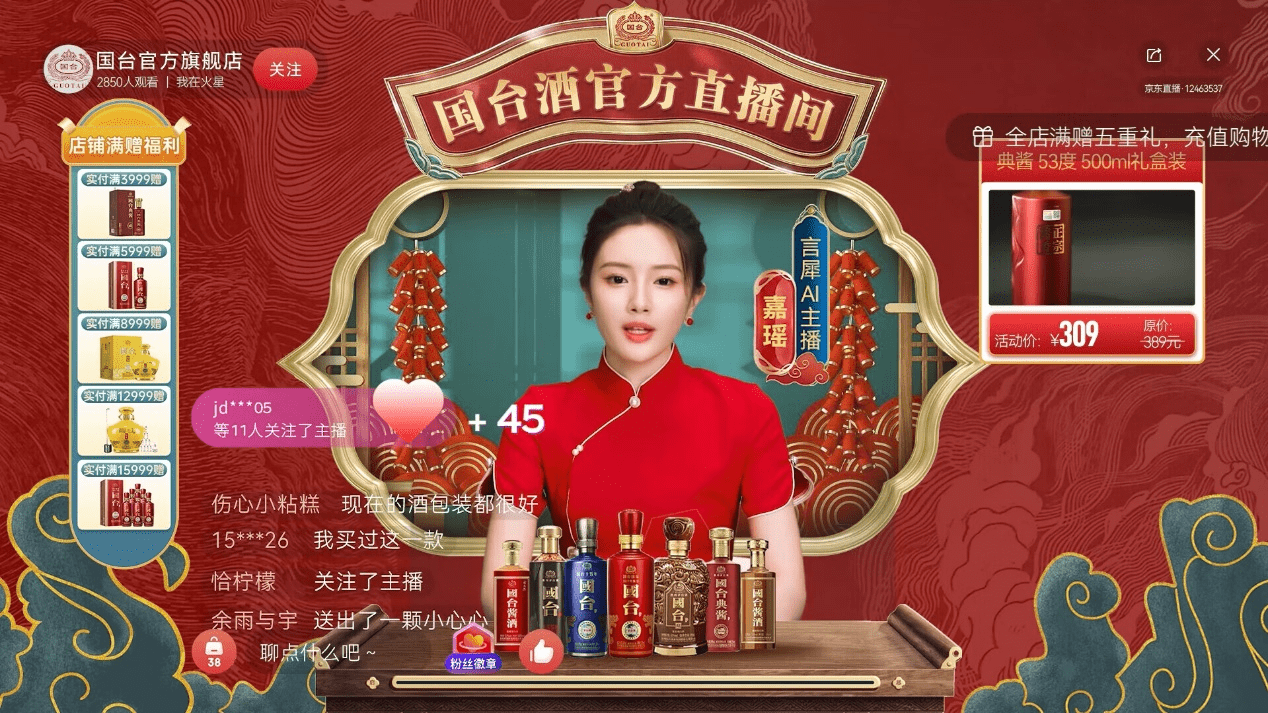Livestreaming is big business in China, and rapidly getting bigger thanks to a new type of presenter. Four times more broadcast rooms opened in the first 10 minutes of this year’s Singles’ Day shopping festival than last year.
According to JD.com, this was due to the advent of AI livestreamers. Brands such as Estee Lauder and L'Oréal engaged virtual anchors to provide live e-commerce. They are not the only ones.
Why virtual livestreams?#
Jo Malone, one of the winners of the biggest spending spree of the year, collaborated with beauty virtual influencer Liu Yexi for its Singles’ Day campaign this year. Prior to this year, virtual influencers had been mostly limited to pre-recorded video. Now they have started livestreaming, too.
In China, livestream mega-celebrities are a big deal. There is Li Jiaqi, also dubbed the “Lipstick King,” who is so famous that Chinese media abound with rumors that he was responsible for almost a third of all Singles’ Day sales last year. Chinese media estimate his gross merchandise value (GMV) exceeded $3.4 billion this year, which Li’s team denies. Another popular host is Viya, a 36-year-old livestreamer who is also known as the “Livestreaming Queen”.
But influencers are prone to scandals. Viya was fined $210 million in 2021 for tax evasion, and Li Jiaqi enraged watchers earlier this year with out-of-touch remarks.
Behind every scandal are brands, such as Florasis, that were collaborating with the influencer and had to recalibrate huge campaigns and budgets to navigate the unexpected twist. Virtual influencers mitigate this risk.
Then there are also regular livestream influencers who are not celebrities in their own right. Viewers usually watch non-influencer livestreams for discounts, not because they find the presenters charming, like they do Viya or Li. This is likely where AI influencers will prove to be most disruptive.
“The live broadcasts featuring digital people selling products seem to overlook a crucial aspect: many viewers are drawn to these broadcasts primarily to purchase goods at lower prices,” says one netizen on Weibo.
Virtual influencers are an economical alternative to traditional livestreaming setups, which cost a lot to get right. Their impact is profound and far-reaching. Companies are now leveraging AI to maintain a continuous online presence, crucial for survival in the highly competitive digital market. The ability of AI anchors to deliver consistent, tireless broadcasting is a game-changer, ensuring brands remain visible and engaging to consumers at all times.
Most of the gains seem to come from lower costs for livestreamers, rather than an increase in quality engagement. According to CICC, virtual influencers can boost average GMV by over 30% through “maximizing user growth during off-peak periods and having a virtual livestreamer active 24/7.”
Can luxury and AI work?#
In the luxury sector, the narrative takes a different turn. Luxury brands, known for their emphasis on personal connections and experiential luxury, find themselves at a crossroads with AI integration. While AI offers scalability and cost-efficiency, it lacks the personal touch and deep product storytelling that luxury consumers crave.
Reactions to AI anchors so far have been mixed, with one netizen on Weibo commenting, “I don’t know if virtual humans are progress or regression. Where is the real person?,” and another noting how presenting is easy for digitized livestreamers. “He doesn’t even bend down to work. He wants to lie down and pick up money,” the commentator wrote. Some find the technology intriguing and innovative, while others are put off by its limitations, such as unnatural expressions and a lack of emotional resonance.
For luxury brands, the key lies in finding the right balance. AI can efficiently handle routine tasks and broaden reach, but human anchors remain indispensable for delivering the nuanced, emotionally engaging experiences that luxury consumers seek. Observers thought it likely that some categories, like skincare, would remain out of virtual influencers’ reach, for the time being at least. Yet, Shiseido proved them wrong thanks to its collaboration with virtual influencer Ayayi earlier this year.
The question facing brands is not whether to adopt AI, but how to do so while preserving their unique brand identity and customer experience. The future of e-commerce lies in this integration, where AI enhances capabilities without overshadowing the human elements that remain crucial to brand storytelling and consumer connection.
During Singles’ Day this year, JD.com’s virtual influencers, called Yanxi virtual anchors, were active in over 4,000 live broadcast rooms. No data on the GMV generated by these rooms has been released, but the number indicates how many brands are willing to adopt this technology for an important sales event.
For some consumers, it’s ultimately the bottom line that counts. As one netizen succinctly wrote: “Digital people are better. The [real] livestream anchor industry is rife with practices like inflated prices and high commissions. All of these are passed on to the customer.”
Key Takeaways #
- JD.com's deployment of over 4,000 Yanxi virtual anchors during Singles' Day underscores the technology's potential impact and acceptance among brands and consumers.
- Major brands like Estee Lauder and L'Oréal utilized virtual anchors for live e-commerce, highlighting the growing integration of AI in retail.
- AI influencers offer a scandal-free alternative, reducing brand risks, offering cost savings and the ability to maintain a constant online presence.
- Mixed reactions to AI anchors underline the need for a balance between technological innovation and preserving human elements in brand communication, especially in luxury.

